3-NITRO-1,8-NAPHTHALIC ANHYDRIDE
Synonym(s):3-Nitronaphthalene-1,8-dicarboxylic anhydride
- CAS NO.:3027-38-1
- Empirical Formula: C12H5NO5
- Molecular Weight: 243.17
- MDL number: MFCD00006926
- EINECS: 629-274-5
- SAFETY DATA SHEET (SDS)
- Update Date: 2025-01-27 09:38:02

What is 3-NITRO-1,8-NAPHTHALIC ANHYDRIDE?
Chemical properties
Light yellow to beige or light brown powder
The Uses of 3-NITRO-1,8-NAPHTHALIC ANHYDRIDE
3-Nitro-1,8-naphthalic anhydride is a reagent used to synthesize a monoboronic acid fluorescent sensor that exhibits emission suitable for ratiometric testing and also displays sensitivity for glucose relative to fructose and galactose. 3-Nitro-1,8-naphthalic anhydride is also used as a starting reagent in the synthesis of 5-substituted naphthalimide derivatives which exhibit high anti-cancer activity.
Properties of 3-NITRO-1,8-NAPHTHALIC ANHYDRIDE
| Melting point: | 247-249 °C (dec.) (lit.) |
| Boiling point: | 386.04°C (rough estimate) |
| Density | 1.4429 (rough estimate) |
| refractive index | 1.4500 (estimate) |
| storage temp. | under inert gas (nitrogen or Argon) at 2-8°C |
| solubility | DMSO (Slightly), Methanol (Slightly, Heated, Sonicated) |
| form | Powder |
| color | Light yellow to beige or light brown |
| BRN | 23762 |
| CAS DataBase Reference | 3027-38-1(CAS DataBase Reference) |
Safety information for 3-NITRO-1,8-NAPHTHALIC ANHYDRIDE
| Signal word | Warning |
| Pictogram(s) |
 Exclamation Mark Irritant GHS07 |
| GHS Hazard Statements |
H315:Skin corrosion/irritation H319:Serious eye damage/eye irritation H335:Specific target organ toxicity, single exposure;Respiratory tract irritation |
| Precautionary Statement Codes |
P261:Avoid breathing dust/fume/gas/mist/vapours/spray. P305+P351+P338:IF IN EYES: Rinse cautiously with water for several minutes. Remove contact lenses, if present and easy to do. Continuerinsing. |
Computed Descriptors for 3-NITRO-1,8-NAPHTHALIC ANHYDRIDE
New Products
Mercury(II) nitrate monohydrate, 98% 2-Chloro-5-nitrobenzoic acid, 98% 2-Benzylpyridine 2-Amino-2-methyl-1-propanol, 93% 3-Benzyloxybenzyl Alcohol Aluminum potassium sulfate dodecahydrate 2-Chloro Acetophenone Methyl-2-Methoxy-5-Sulfamoyl Benzoate Orthochlorobenzaldehyde (2-Chlorobenzaldehyde) Pyrrolidine Para Chloro Toluene (PCT) Diiodo Pentoxide 1-(Sulfamoylamino)Propane 1-phenyl-1,2,3,4-tetrahydroisoquinoline 2-amino benzyl alcohol 3,5-benzyloxy Acetophenone Veratric acid Pyridine-2-carboxaldehydeRelated products of tetrahydrofuran

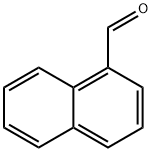
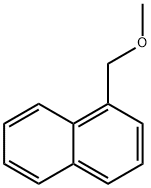
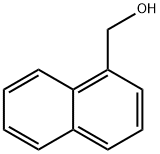
![5-AMINO-BENZO[DE]ISOCHROMENE-1,3-DIONE](https://img.chemicalbook.in/CAS/GIF/23204-38-8.gif)

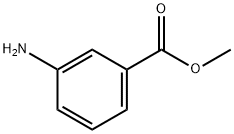
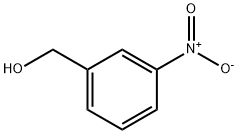
You may like
-
 552-89-6 98%View Details
552-89-6 98%View Details
552-89-6 -
 4-Dimethylamine Pyridine 98%View Details
4-Dimethylamine Pyridine 98%View Details
1122-58-3 -
 2-Picolylamine (2-Aminomethylpyridine) 3731-51-9 98%View Details
2-Picolylamine (2-Aminomethylpyridine) 3731-51-9 98%View Details
3731-51-9 -
 1-(dibromomethyl)-2-nitrobenzene 98%View Details
1-(dibromomethyl)-2-nitrobenzene 98%View Details
65962-15-4 - 1 -
 2-Venylpyridine 202-879-8 98%View Details
2-Venylpyridine 202-879-8 98%View Details
202-879-8 -
 O-Benzylhydroxylamine Hydrochloride 98%View Details
O-Benzylhydroxylamine Hydrochloride 98%View Details
2687-43-6 -
 23680-84-4 2-Chloro-4-amino-6,7-dimethoxyquinazoline 98%View Details
23680-84-4 2-Chloro-4-amino-6,7-dimethoxyquinazoline 98%View Details
23680-84-4 -
 609-15-4 Ethyl-2-Chloroacetoacetate 98%View Details
609-15-4 Ethyl-2-Chloroacetoacetate 98%View Details
609-15-4
Statement: All products displayed on this website are only used for non medical purposes such as industrial applications or scientific research, and cannot be used for clinical diagnosis or treatment of humans or animals. They are not medicinal or edible.